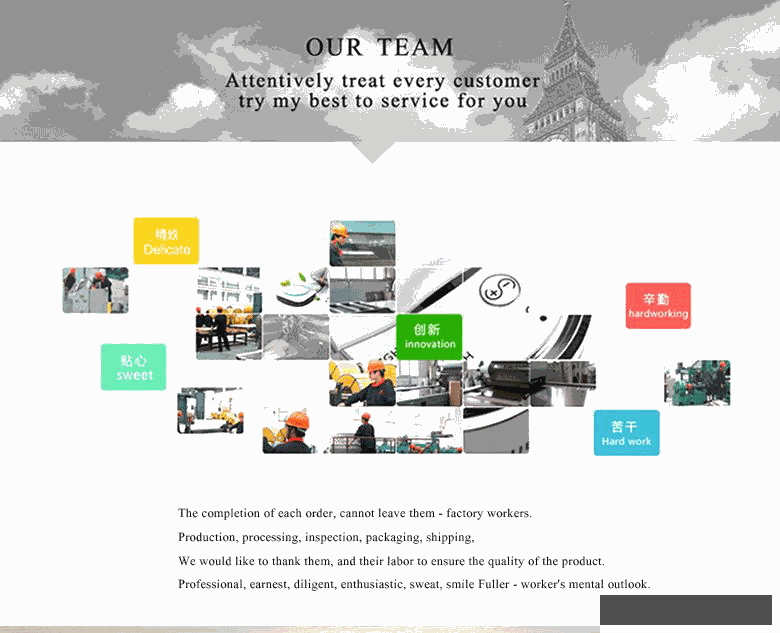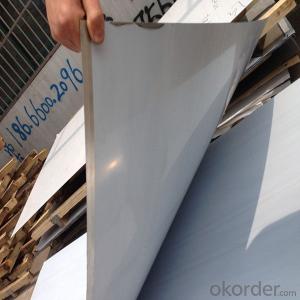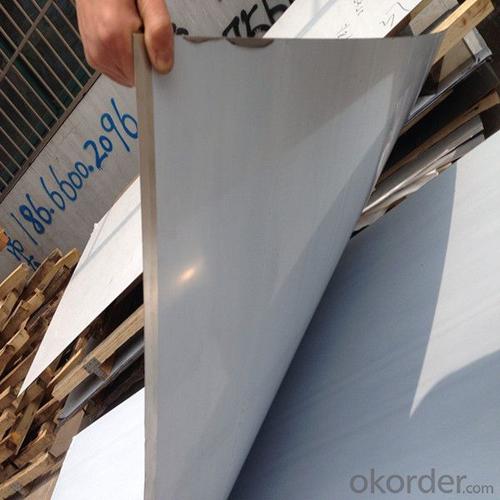Stainless Steel Sheet 321 prices Per Tons
- Loading Port:
- Shanghai
- Payment Terms:
- TT OR LC
- Min Order Qty:
- 2 m.t.
- Supply Capability:
- 2000 m.t./month
OKorder Service Pledge
OKorder Financial Service
You Might Also Like
Specification
430 304 304L 316L 201 310s 321 316 4x8 stainless steel sheet prices
Product Description
1. Specifications about stainless steel sheet
Commodity | 430 304 304L 316L 201 316 4x8 sheet metal prices stainless steel |
Grade | 201,202,304,304L,316,316L,310S,309S,321,301,310,410,420,430,904L |
Brand | TISCO ,BAOSTEEL,POSCO,JISCO,LISCO |
Certification | SGS,BV,IQI,TUV,ISO,etc |
Thickness | 0.2mm-150mm |
Width | 1000,1219,1250,1500mm, or as your requirements |
Length | 2000,2438,2500,3000,6000mm, or as your requirements |
Surface | No.1, 2B, BA, 8K Mirror, Hairline,satin, Embossed,brush,No.4,HL,matt,pvc film,laser film. |
Standard | ASTM,AISI,SUS,JIS,EN,DIN,GB, ASME,etc |
Delivery time | 5-7 days after confirming the order |
MOQ | 1 Ton |
Advantages | Showing the splendor of your quality, wear resistant as well , strong corrosion resistance and decorative effect, durable and beautiful in good taste. |
2. Chemical Composition about stainless steel sheet
Grade | C | Si | Mn | P | S | Ni | Cr | Mo |
201 | ≤0.15 | ≤1.00 | 5.5~7.5 | ≤0.06 | ≤0.03 | 3.50~5.50 | 16.0~18.0 | |
202 | ≤0.15 | ≤1.00 | 7.5~10.0 | ≤0.06 | ≤0.03 | 4.0~6.0 | 17.0~19.0 | |
301 | ≤0.15 | ≤1.00 | ≤2.00 | ≤0.045 | ≤0.03 | 6.0~8.0 | 16.0~18.0 | |
302 | ≤0.15 | ≤1.00 | ≤2.00 | ≤0.045 | ≤0.03 | 8.0~10.0 | 17.0~19.0 | |
304 | ≤0.07 | ≤1.00 | ≤2.00 | ≤0.045 | ≤0.03 | 8.0~10.5 | 18.0~20.0 | - |
304L | ≤0.03 | ≤1.00 | ≤2.00 | ≤0.045 | ≤0.03 | 9.0~13.0 | 18.0~20.0 | - |
310S | ≤0.08 | ≤1.00 | ≤2.00 | ≤0.045 | ≤0.03 | 19.0~22.0 | 24.0~26.0 | - |
316 | ≤0.08 | ≤1.00 | ≤2.00 | ≤0.045 | ≤0.03 | 10.0~14.0 | 16.0~18.0 | 2.00~3.00 |
316L | ≤0.03 | ≤1.00 | ≤2.00 | ≤0.045 | ≤0.03 | 12.0~15.0 | 16.0~18.0 | 2.00~3.00 |
321 | ≤0.08 | ≤1.00 | ≤2.00 | ≤0.045 | ≤0.03 | 9.0~13.0 | 17.0~19.0 | - |
430 | ≤0.12 | ≤0.75 | ≤1.00 | ≤0.045 | ≤0.03 | ≤0.60 | 16.0~18.0 | - |
430A | ≤0.06 | ≤0.50 | ≤0.50 | ≤0.030 | ≤0.50 | ≤0.25 | 14.0~17.0 |
3.Surface--stainless steel sheet
| Surface Finish | Definition | Application |
| 2B | Those finished, after cold rolling, by heat treatment, pickling or other equivalent treatment and lastly by cold rolling to given appropriate luster. | Medical equipment, Food industry, Construction material, Kitchen utensils. |
BA/8K mirror | Those processed with bright heat treatment after cold rolling. | Kitchen utensils, Electric equipment, Building construction. |
| NO.3 | Those finished by polishing with No.100 to No.120 abrasives specified in JIS R6001. | Kitchen utensils, Building construction. |
| NO.4 | Those finished by polishing with No.150 to No.180 abrasives specified in JIS R6001. | Kitchen utensils, Building construction, Medical equipment. |
| Hairline | Those finished polishing so as to give continuous polishing streaks by using abrasive of suitable grain size. | Building Construction. |
| NO.1 | The surface finished by heat treatment and pickling or processes corresponding there to after hot rolling. | Chemical tank, pipe. |
4.Products photos



Packaging & Shipping


Our Services
Manufacturing Process of Stainless Steel Sheet/Plate:
Raw materials are sending to hot rolling units for rolling into different sizes.
→Hot rolled material is annealing in cold rolled annealing furnace and pickling in acid.
→All mill rolls are grinded on precision grinding machine with proper chamfering after first shift operation.
→All sheets are pickled in different tanks and dried on brush roll machine before dispatched.
→These sheets are again annealing and are sent to straighten machine for straightening.
→Inspections are done at various stages. Keep proper control overall internal process via rolling, annealing and pickling by our experienced staff.



Stainless steel maintenance:
(1) Regular cleaning and maintenance
(2) Pay attention to prevent the occurrence of the phenomenon of surface scratches
(3) Use soap, weak detergent or warm water to remove surface dust, dirt
(4) In addition to the surface of the binder with alcohol or an organic solvent (ether, benzene)
(5) Use neutral detergent or ammonia solution in addition to surface oil
(6) With 10% nitric acid or abrasive detergent in addition to the surface of the embroider caused by the dirt.
- Q: Can stainless steel sheets be used for insulation?
- No, stainless steel sheets cannot be used for insulation. Stainless steel is a good conductor of heat and electricity, so it would not provide adequate insulation.
- Q: What's the difference between 304 stainless steel and 314?
- 304 is equivalent to 0Cr18Ni9 stainless steel in our country,314 is equivalent to 1Cr25Ni20Si2 stainless steel in our country
- Q: Are stainless steel sheets resistant to impact?
- Stainless steel sheets possess a general resistance to impact. Renowned for their robustness and durability, stainless steel is capable of enduring substantial force without deformation or fracture. This quality renders stainless steel sheets highly sought after in the construction, automotive, and aerospace sectors, where impact resistance is imperative. Moreover, the impact resistance of stainless steel sheets can be augmented by subjecting them to additional hardening or tempering processes, tailored to meet the precise demands of the application at hand.
- Q: Can stainless steel sheets be used for roofing applications?
- Yes, stainless steel sheets can be used for roofing applications. Stainless steel is a durable and corrosion-resistant material, making it suitable for outdoor use and protecting against weather elements. It offers excellent strength and longevity, making it a popular choice for roofing in both commercial and residential settings.
- Q: Can stainless steel sheets be used for countertops?
- Yes, stainless steel sheets can be used for countertops. Stainless steel is a durable and versatile material that is resistant to stains, heat, and bacteria, making it an excellent choice for kitchen countertops. It is easy to clean, maintain, and has a sleek and modern appearance. Stainless steel countertops are commonly used in commercial kitchens but are also becoming increasingly popular in residential settings due to their durability and hygienic properties.
- Q: Can stainless steel sheets be used in industrial applications?
- Stainless steel sheets possess a myriad of industrial uses without a doubt. Their reputation for outstanding corrosion resistance, durability, and strength renders them perfect for a plethora of industrial settings. The automotive, aerospace, construction, manufacturing, food and beverage, chemical processing, and numerous other sectors regularly employ this material. The utilization of stainless steel sheets primarily stems from their capability to withstand extreme conditions, harsh chemicals, and high temperatures. Their malleability allows for the creation of diverse shapes and sizes, rendering them adaptable for a wide array of applications. Commonly, stainless steel sheets find their purpose in manufacturing equipment, machinery, storage tanks, pipelines, architectural structures, and as a protective layer for corrosion-resistant surfaces. Additionally, stainless steel sheets offer sanitary qualities, which make them particularly suitable for the food and beverage industry. Their effortless cleaning, maintenance, and sterilization ensure compliance with rigorous industry standards. To summarize, stainless steel sheets are versatile and dependable materials that can be effectively utilized in various industrial applications due to their extraordinary corrosion resistance, durability, strength, and sanitary properties.
- Q: Who knows the production process of stainless steel plate?
- Sanitary conditions are important for many industries, such as food processing, catering, brewing and chemical processes. In these applications, the surface must be cleaned daily and chemical cleaning agents are often used.Stainless steel is the best material in this area, in public places, the surface of the stainless steel is often scribbles, but an important characteristic is it can be washed off, this is a remarkable characteristic of stainless steel is better than aluminum. The surface of aluminum tends to leave traces that are often difficult to remove. When cleaning the stainless steel surface, it should be cleaned along the lines of stainless steel, because some of the surface finishing lines are unidirectional.Stainless steel most suitable for hospital or other health conditions of critical field, such as: food processing, food, brewing and chemical industry, this is not only because it is easy to clean every day, sometimes the use of chemical cleaning agents, but also because it is not easy to breed bacteria. Tests show that stainless steel has the same properties in this field as glass and ceramics.
- Q: Are stainless steel sheets resistant to nitric acid?
- Yes, stainless steel sheets are generally resistant to nitric acid. Nitric acid is a strong oxidizing agent that can corrode and dissolve many metals, but stainless steel contains a significant amount of chromium, which forms a protective oxide layer on the surface of the material. This oxide layer acts as a barrier, preventing the nitric acid from coming into direct contact with the stainless steel and thus providing resistance to corrosion. However, it is important to note that the resistance may vary depending on the grade and composition of the stainless steel, as well as the concentration and temperature of the nitric acid.
- Q: What is the minimum thickness of stainless steel sheets available?
- The minimum thickness of stainless steel sheets available can vary depending on the manufacturer and the specific grade of stainless steel being used. Generally, the thinnest stainless steel sheets available range from 0.4mm to 0.5mm. However, it is important to note that some manufacturers may offer thinner sheets, such as 0.3mm, but these may be more specialized or less commonly available. If you require a specific thickness for your project, it is recommended to consult with stainless steel suppliers or manufacturers to determine the options available to you.
- Q: What are the different types of stainless steel sheet alloys?
- There are several different types of stainless steel sheet alloys, including austenitic, ferritic, martensitic, and duplex stainless steel. Each alloy has unique characteristics and is suitable for various applications based on factors such as corrosion resistance, strength, and heat resistance.
Send your message to us
Stainless Steel Sheet 321 prices Per Tons
- Loading Port:
- Shanghai
- Payment Terms:
- TT OR LC
- Min Order Qty:
- 2 m.t.
- Supply Capability:
- 2000 m.t./month
OKorder Service Pledge
OKorder Financial Service
Similar products
Hot products
Hot Searches
Related keywords






























